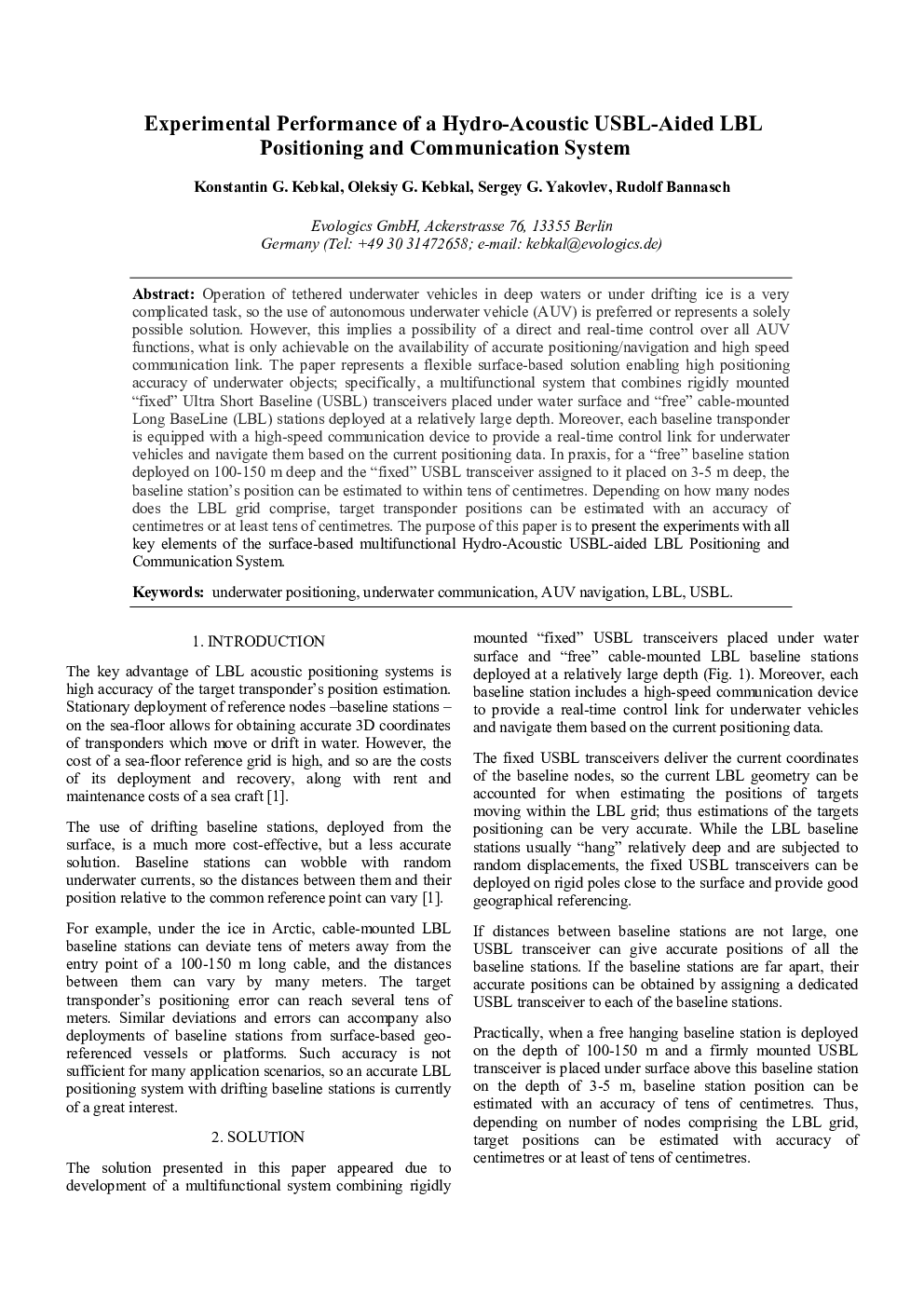| کد مقاله | کد نشریه | سال انتشار | مقاله انگلیسی | نسخه تمام متن |
|---|---|---|---|---|
| 719251 | 892274 | 2012 | 6 صفحه PDF | دانلود رایگان |

Operation of tethered underwater vehicles in deep waters or under drifting ice is a very complicated task, so the use of autonomous underwater vehicle (AUV) is preferred or represents a solely possible solution. However, this implies a possibility of a direct and real-time control over all AUV functions, what is only achievable on the availability of accurate positioning/navigation and high speed communication link. The paper represents a flexible surface-based solution enabling high positioning accuracy of underwater objects; specifically, a multifunctional system that combines rigidly mounted “fixed” Ultra Short Baseline (USBL) transceivers placed under water surface and “free” cable-mounted Long BaseLine (LBL) stations deployed at a relatively large depth. Moreover, each baseline transponder is equipped with a high-speed communication device to provide a real-time control link for underwater vehicles and navigate them based on the current positioning data. In praxis, for a “free” baseline station deployed on 100-150 m deep and the “fixed” USBL transceiver assigned to it placed on 3-5 m deep, the baseline station's position can be estimated to within tens of centimetres. Depending on how many nodes does the LBL grid comprise, target transponder positions can be estimated with an accuracy of centimetres or at least tens of centimetres. The purpose of this paper is to present the experiments with all key elements of the surface-based multifunctional Hydro-Acoustic USBL-aided LBL Positioning and Communication System.
Journal: IFAC Proceedings Volumes - Volume 45, Issue 5, 2012, Pages 249-254